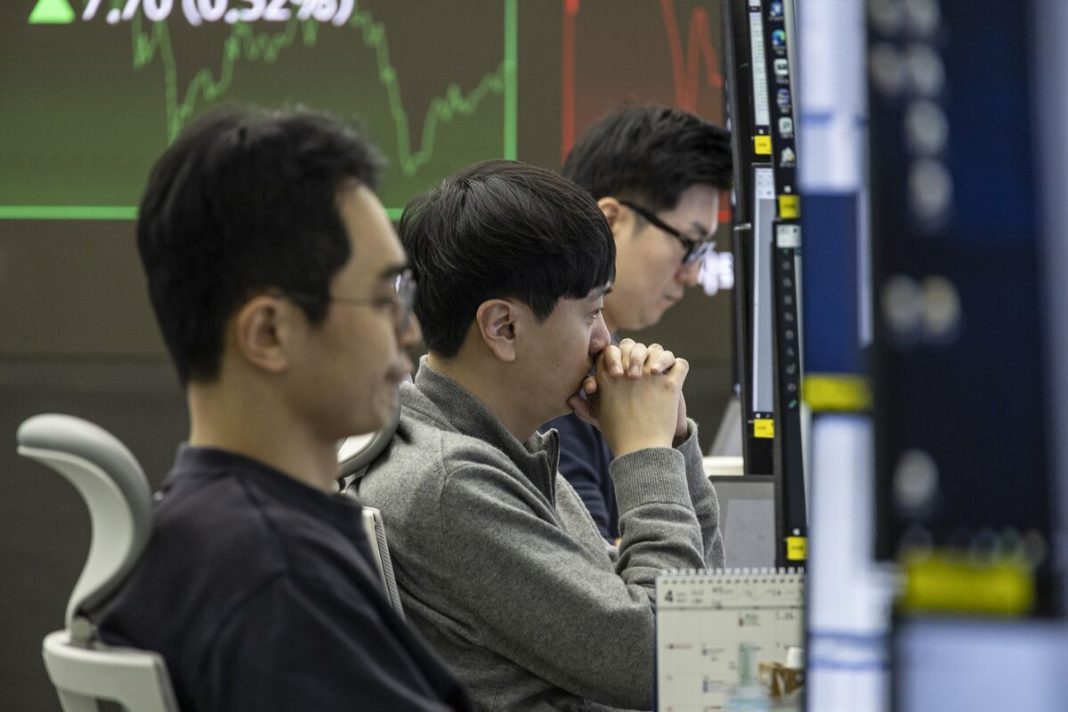The tech world, particularly the Asian markets, is once again in the spotlight, and not always for the reasons innovators hope. Recent weeks have seen a noticeable chill blow through Asian tech stocks, sending ripples across global markets. The culprit? A growing unease regarding the lofty valuations of AI companies, sparking a broader reassessment of growth stocks that have soared on the back of artificial intelligence enthusiasm.
The AI Valuation Conundrum
For months, the narrative around AI has been one of exponential growth and limitless potential. Companies integrating AI, or even those merely hinting at future AI applications, saw their stock prices reach dizzying heights. This surge was understandable; AI promises to revolutionize industries, enhance productivity, and unlock new frontiers of innovation. However, as the initial euphoria settles, a more critical lens is being applied to these valuations.
Investors and analysts are increasingly asking tough questions: Are current stock prices justified by tangible earnings, or are they largely built on future speculation? While the long-term prospects for AI remain robust, the speed and scale of recent gains in some AI-centric firms have started to trigger comparisons to past market bubbles. This isn’t to say AI itself is a bubble, but rather that the market’s enthusiasm may have run ahead of immediate financial realities for some players. The disconnect between current profitability and projected future growth is widening, leading to a natural and perhaps necessary, market correction.
Asia’s Amplified Exposure
Asian tech stocks, particularly those in semiconductor manufacturing, internet services, and AI development, are uniquely exposed to this global re-evaluation. Many of these firms are at the forefront of AI hardware production or are key enablers of the AI ecosystem. When global sentiment shifts towards caution regarding AI valuations, these highly leveraged positions mean Asian markets often feel the impact acutely.
Beyond the direct AI exposure, several regional factors contribute to the heightened sensitivity. Global economic headwinds, coupled with specific domestic challenges in some key Asian economies, create an environment where investors are quick to de-risk. This combination of global AI valuation worries and local market pressures creates a potent cocktail for volatility. “It’s a double-edged sword,” noted one market observer. “Asian tech companies are critical to the AI future, but that also means they’re front and center when the market decides to take a breather and ask if the price is right.” This sentiment underscores the careful balance investors are now trying to strike between undeniable innovation and sustainable growth.
Navigating the Path Forward
While the recent downturn might seem alarming, it’s crucial to view it within the broader context of market cycles. Periods of rapid growth are often followed by consolidation and re-evaluation. For savvy investors, such moments can present opportunities to differentiate between genuinely disruptive innovators with strong fundamentals and those whose valuations were purely driven by speculative fervor. The underlying technological advancements in AI are not diminishing; if anything, they continue to accelerate. What’s changing is the market’s appetite for risk and its demand for more concrete evidence of future profitability to justify today’s prices.
Companies that can demonstrate clear pathways to monetization, sustainable competitive advantages, and prudent financial management will likely weather this storm and emerge stronger. For the market as a whole, this period of recalibration could lead to a healthier, more sustainable growth trajectory for the AI sector in the long run, ensuring that genuine innovation is rewarded without the excessive exuberance that often precedes deeper corrections.
The current market jitters around Asian tech and AI valuations are a testament to the dynamic nature of investing. It’s a reminder that even the most revolutionary technologies are subject to the fundamental laws of supply and demand, and the ever-present human element of hope and fear in the marketplace.




